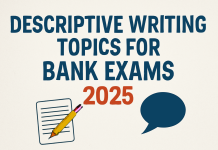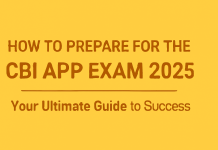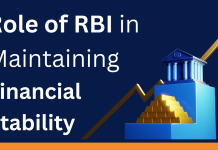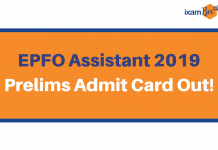Amid so much speculation going around RBI releasing RBI Grade B notification, your preparation for RBI Grade B exam might have taken a backseat. Though being in the know about RBI notification is important you cannot afford to just turn a blind eye to RBI Grade B exam preparation. You need to bear in mind that RBI Grade B exam is really a tough nut to crack and therefore your preparations should be top-notch. To give a much required push to your RBI Grade B preparation, ixamBee has started a RBI Grade B important topics series, where we will be posting short blogs about important topics related to RBI Grade B exam which will help you in your RBI Grade B exam preparation.
Click here to know more about RBI Grade B 2019 exam
In this blog, let’s learn about FALLCR!!!
FALLCR stands for Facility to Avail Liquidity for Liquidity Coverage Ratio
To understand FALLCR, one first needs to understand LCR (Liquidity Coverage Ratio).
LCR = HQLA/Total net cash outflow over next 30 calendar days = should be 100%
LCR is a short term liquidity ratio to be maintained by banks in form of high quality liquid assets (HQLA) to survive an acute stress scenario lasting for 30 days. LCR should be 100% or more i.e. at a minimum, the stock of liquid assets should enable the bank to survive until day 30 of the stress scenario, by which time it is assumed that appropriate corrective actions can be taken.
The HQLA, as per BASEL III, should include assets that can be easily and immediately converted into cash at little or no loss of val ue (i.e. near cash assets). This would include cash and G-secs.
Now, LCR was introduced as a prudential liquidity requirement under BASEL III. This effectively brought in a second parallel liquidity requirement for banks in India, given RBI already has a Statutory Liquidity Ratio (SLR) requirement in place. These two parallel regulations, using almost similar liquid assets to be maintained by banks, if complied with together, will substantially reduce the lending capacity of the banks.


To prevent the overlap of liquidity requirements hampering the lending capacity of the banks, RBI has allowed for a limited portion of government securities used to meet the SLR to be recognised as HQLA Level 1 for calculating LCR.
The assets allowed as Level 1 High Quality Liquid Assets (HQLAs) for the purpose of computing the LCR of banks, inter alia, include
- Government securities in excess of the minimum SLR requirement
- within the mandatory SLR requirement, G-secs to the extent allowed by RBI under
- Marginal Standing Facility (MSF; presently 2% of the bank’s NDTL and
- FALLCR (presently 13.50% of the bank’s NDTL as of July 2019)
Thus, FALLCR is that part of the G-secs under SLR that can be pledged to raise liquid assets to meet LCR requirement under BASEL III. What this means is that when a bank invests in G-secs, these will help the bank to meet its SLR requirement as per RBI and can also be pledged to raise liquidity as HQLA for meeting the LCR requirement under BASEL III.
Click here to practice RBI Grade B free mock tests
In April 2019, RBI decided to permit banks to reckon an additional 2% G-secs held by them under FALLCR within the mandatory SLR requirement as Level 1 HQLA for the purpose of computing LCR, in a phased manner, as under:
| Effective Date | FALLCR (per cent of NDTL) |
Total HQLA carve out from SLR (per cent of NDTL) |
| April 4, 2019 | 13.50 | 15.50 |
| August 1, 2019 | 14.00 | 16.00 |
| December 1, 2019 | 14.50 | 16.50 |
| April 1, 2020 | 15.00 | 17.00 |
As per the roadmap, FALLCR is scheduled to increase by 0.50% of NDTL each on August 1 and December 1, 2019, respectively.
In July 2019, RBI permitted banks to reckon with this increase in FALLCR of 1.0% of the bank’s NDTL as Level 1 HQLA for computing LCR, to the extent of incremental outstanding credit to NBFCs and Housing Finance Companies (HFCs) over and above the amount of credit to NBFCs/HFCs outstanding on their books as on date. The frontloading of FALLCR of 1%, exclusively meant for incremental exposure to NBFCs/HFCs, will form part of general FALLCR as and when the increase in FALLCR takes place as per original schedule on August 1 and December 1, 2019.
ixamBee offers a comprehensive online course for RBI Grade B 2019 exam designed by by Mr. Chandraprakash Joshi (ex-RBI GR B, MBA-Finance, PhD), Ms. Arunima Sinha (Coach for Banking exams for 6 years, Ex-Manager SIDBI, Ex-Bank PO), Ms. Prachi Agarwal (MBA Finance with over a decade experience) and Ms. Veena.M (B.Sc. Agri, MBA, Content Expert for general Awareness).
Click here to get FREE demo of RBI Grade B online course
Few of our next blog topics are as follows:
- What is the “Monetary Policy Corridor”?
- What is the VRR scheme for FPIs?
- What is the difference between FDI, FPI and FII?
Want to know more about the topics, then stay tuned to our blogs section.
About the Author Prachi Agarwal:

Prachi Agarwal is an MBA (Finance) from BIMTECH, Noida and B. Com (Hons) from Hansraj College, Delhi University. She has previously worked with CARE Ratings. At ixamBee, she is faculty for Financial and Management and Securities Market Awareness. Her expertise topics are Ratio analysis, risk management, bond valuation, etc. She is the student’s favorite faculty for her easy to understand approach while teaching in Live Classes.
Get Free Online Test Series, Daily GK Update, PIB Current Affairs, Banking Awareness as well as latest updates for Bank PO, Bank Clerk, SSC, RBI, NABARD and Other Government Jobs.
небольшой займстуденческий займзайм под залог птс уссурийск













